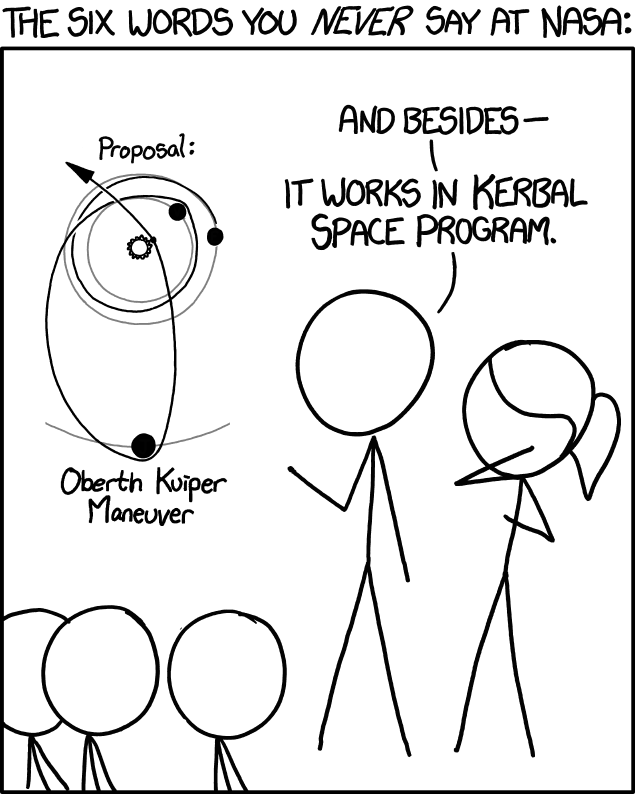You cannot launch rockets “directly at the sun”. We’re orbiting the sun. All the rockets we launch are orbiting the sun by default. The way you hit the sun is by slowing down the rocket from the Earth’s starting orbital velocity so that it can fall into the sun. You actually have to point the rocket away from the orbital vector of the Earth which would be perpendicular to the sun and fire the rocket to slow it down.
Side note and fun fact, it takes less energy to speed up a rocket from Earth’s orbital velocity to escape the entire solar system than it takes slow it down to reach the sun.
FALSE.
You absolutely can launch rockets “directly at the sun”.
… you’re just not likely to hit it.Not without an inappropriate amount of delta v, it takes effort to hit the sun from the earth. Iirc it’s less energy to yeet yourself out of the solar system from earth than to hit the sun. Direct be even crazier amounts of energy to cancel out our orbital velocity. Iirc it would be easier to do a Jupiter transfer to save on delta v, going direct though is clown town energy waste unless you have some dying need to get there faster for some reason. But you’ll pay for it, a lot, least until we get warp drives or something neato exotic. https://issfd.org/ISSFD_2014/ISSFD24_Paper_S6-5_jehn.pdf If you’re willing to trade time there are less costly ways to “hit” a 700 000 km radius target energy wise.
It is actually more energy efficient to fly away from the Sun first, since the required orbital velocity you need to cancel out goes down as you get further. So launching missiles towards the sun from Pluto would be way easier, in terms of acceleration needed
That’s not true either, it takes way more energy to drop your orbit the further out you are, regardless of eccentricity. It’s easier to curcularize near apoapsis, easier to change apoapsis and orbital planes at periapsis. The trick, however, is that bonus from periapsis works on being at any periapsis (ie, a near miss of a planet), just need the speed boost from being nearest the gravity well. That’s what gravitational slingshots are. I think a sun trajectory uses Jupiter a few times for maneuvers.

Well if we’re discussing semantics you could say you’re targeting it directly at the sun by using a trajectory that doesn’t aim to slingshot or orbit around other planetary bodies first
If only there was a word that meant we used the path of least resistance.
Such a delightful display of intersectional nerdery.
Space nerds, history nerds, and SG1 nerds
Carter: Oh boy, here I go blowing up suns again!
You cause 1 star to supernova and poison another and all of the sudden you’ve got a reputation for destroying solar systems.
When you took an elective and it almost made you change majors
The sun is basically impervious, so it’s a good thing they are just aiming at the sun and not at Apollo or the line he uses to pull the sun across the sky.
The sun is basically impervious
Getting some real “it’s unsinkable” vibes here, buddy. Don’t go selling tickets to an iceberg you can’t something something.
The suns impervious? That’s quitter talk. I’m going to kick that shit’s ass
That doesn’t sound right, but I don’t know enough about stars to dispute it.
We do a little bit of trolling
Yet another piece of evidence that the SGC is still around
Indeed.







